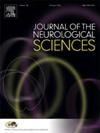Comparison of prestroke frailty and disability for outcome prediction in older stroke patients
IF 3.2
3区 医学
Q1 CLINICAL NEUROLOGY
引用次数: 0
Abstract
Background
Prestroke disability, measured by the modified Rankin Scale (mRS), is routinely used in older (≥65 years) patients to predict stroke outcomes. Frailty, a common geriatric syndrome, is also associated with poor health outcomes but is rarely assessed in older stroke patients. The Clinical Frailty Scale (CFS) is a simple frailty assessment tool; however, its prognostic value in stroke clinical practice remains uncertain. This study compares the predictive value of prestroke mRS and CFS for stroke outcomes in older patients.
Methods
We included 4086 older patients with acute stroke (82.6 % ischemic), consecutively admitted to an Italian hospital. The median age was 81 years (25th–75th percentile: 75–87 years). Prestroke mRS was assessed at admission, while prestroke CFS was retrospectively evaluated from medical records. Multivariable-adjusted models tested the association of each scale with prolonged admission, unfavorable discharge setting, and mortality at 30 days and 1 year. For each outcome, the predictive value of the mRS and CFS scales was compared using the difference in Akaike's Information Criterion (AIC) between the respective models (AICmRS-CFS).
Results
Both mRS and CFS were positively associated with unfavorable discharge and mortality and inversely associated with prolonged admission. However, based on AICmRS-CFS, CFS was a stronger outcome predictor than mRS. In ischemic stroke patients receiving reperfusion therapies, CFS was also superior to mRS in predicting neurological improvement following treatment and the likelihood of discharge to long-term care.
Conclusions
Compared to prestroke mRS, prestroke CFS may offer additional prognostic information in older stroke patients.

老年脑卒中患者卒中前虚弱和残疾对预后预测的比较
背景:卒中前残疾,通过改良的Rankin量表(mRS)测量,通常用于老年(≥65岁)患者预测卒中结局。虚弱是一种常见的老年综合症,也与健康状况不佳有关,但很少在老年中风患者中进行评估。临床虚弱量表(CFS)是一种简单的虚弱评估工具;然而,其在脑卒中临床实践中的预后价值仍不确定。本研究比较了脑卒中前mRS和CFS对老年患者脑卒中预后的预测价值。方法纳入意大利某医院4086例老年急性脑卒中患者(82.6%为缺血性)。中位年龄为81岁(25 - 75百分位:75-87岁)。入院时评估卒中前mRS,而卒中前CFS回顾性评估医疗记录。多变量调整模型检验了每个量表与延长入院时间、不良出院环境和30天和1年死亡率的关系。对于每个结果,使用各自模型(aicmr -CFS)之间赤池信息标准(Akaike’s Information Criterion, AIC)的差异来比较mRS和CFS量表的预测值。结果mRS和CFS与不良出院和死亡率呈正相关,与住院时间延长呈负相关。然而,基于aicmr -CFS, CFS是比mRS更强的预后预测因子。在接受再灌注治疗的缺血性卒中患者中,CFS在预测治疗后神经系统改善和出院接受长期护理的可能性方面也优于mRS。结论与脑卒中前mRS相比,脑卒中前CFS可能为老年脑卒中患者提供更多的预后信息。
本文章由计算机程序翻译,如有差异,请以英文原文为准。
求助全文
约1分钟内获得全文
求助全文
来源期刊

Journal of the Neurological Sciences
医学-临床神经学
CiteScore
7.60
自引率
2.30%
发文量
313
审稿时长
22 days
期刊介绍:
The Journal of the Neurological Sciences provides a medium for the prompt publication of original articles in neurology and neuroscience from around the world. JNS places special emphasis on articles that: 1) provide guidance to clinicians around the world (Best Practices, Global Neurology); 2) report cutting-edge science related to neurology (Basic and Translational Sciences); 3) educate readers about relevant and practical clinical outcomes in neurology (Outcomes Research); and 4) summarize or editorialize the current state of the literature (Reviews, Commentaries, and Editorials).
JNS accepts most types of manuscripts for consideration including original research papers, short communications, reviews, book reviews, letters to the Editor, opinions and editorials. Topics considered will be from neurology-related fields that are of interest to practicing physicians around the world. Examples include neuromuscular diseases, demyelination, atrophies, dementia, neoplasms, infections, epilepsies, disturbances of consciousness, stroke and cerebral circulation, growth and development, plasticity and intermediary metabolism.
 求助内容:
求助内容: 应助结果提醒方式:
应助结果提醒方式:


